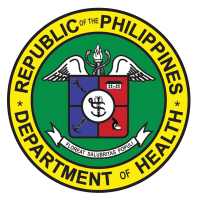
PHILIPPINE HEALTH ADVISORIES

Dengue fever and dengue hemorrhagic fever
- are acute viral infections that affect infants, young children, and adults.
Cause
- Bite of an Aedes aegypti mosquito infected with any one of the four dengue viruses.
Mode of Transmission
- Transmitted by a day-biting mosquito called Aedes aegypti and Aedes albopictus (These mosquitoes lay eggs in clear and stagnant water found in flower vases, cans, rain barrels, old rubber tires, etc. The adult mosquitoes rest in dark places of the house.)
- Signs and Symptoms
- Sudden onset of high fever which may last from 2 to 7 days.
- Bite of an Aedes aegypti mosquito infected with any one of the four dengue viruses.
- Joint and muscle pain and pain behind the eyes
- Weakness
- Skin rashes
- Nosebleeding when fever starts to subside
- Abdominal pain
- Vomiting of coffee-colored matter
- Dark-colored stools
- Difficulty of breathing
Treatment
- - Do not give aspirin for fever.
- - Give sufficient amount of water or rehydrate a dengue suspect.
- - If fever or symptoms persist for 2 or more days, bring the patient to the nearest hospital.
Prevention and Control
- Follow the 4-S against Dengue:
- Search and Destroy
- - Cover water drums and pails.
- - Replace water in flower vases once a week.
- - Clean gutters of leaves and debris.
- - Collect and dispose all unusable tin cans, jars, bottles and other items that can collect and hold water.
- Self-Protection Measures
- - Wear long pants and long-sleeved shirt.
- - Use mosquito repellant every day.
- Seek Early Consultation
- - Consult the doctors immediately if fever persists after 2 days and a rash appears.
- Say Yes to Fogging When there is an Impending Outbreak or a Hotspot

References
• DOH Philippines. (2005). Health Advisory on Dengue.
• World Health Organization. (2011) Dengue haemorrhagic fever. Retrieved from http://www.who.int/csr/disease/dengue/en.
